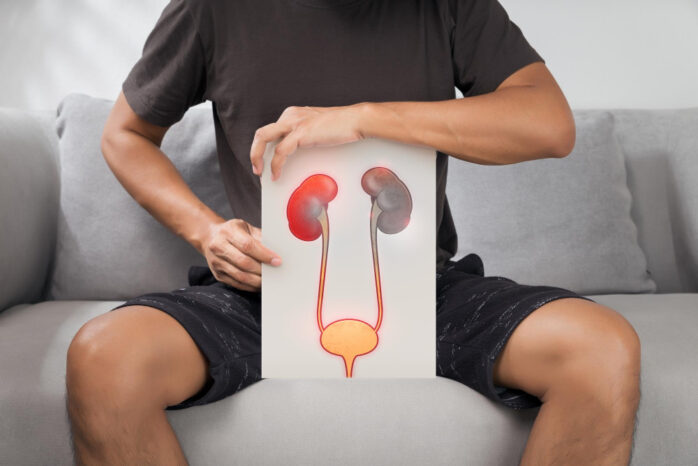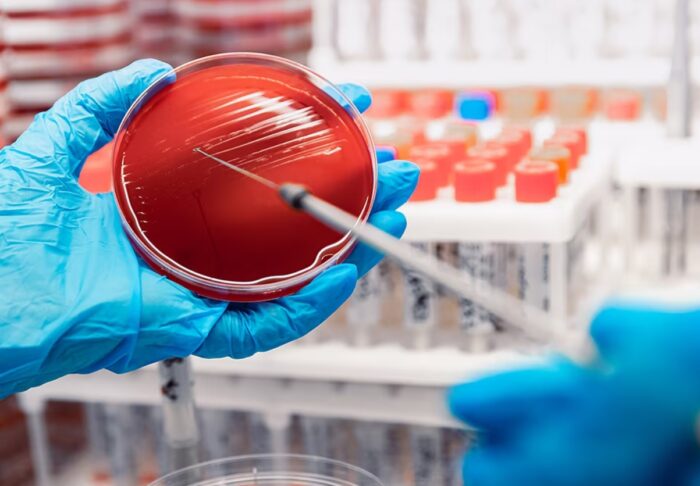
Key Takeaways:
- Molecular UTI panels use advanced molecular techniques to detect and identify bacteria causing urinary tract infections.
- Advantages of molecular UTI panels include increased accuracy, rapid results, and comprehensive identification of pathogens.
- Patient populations that can benefit from molecular UTI panels include those with recurrent UTIs, pregnant women, and individuals with antibiotic resistance.
- Challenges in implementing molecular UTI panels include cost, cost-effectiveness, and integration into laboratory protocols.
The Basics: What is a Molecular UTI Panel?
Urinary tract infections (UTIs) are a common and disruptive medical condition affecting millions of people worldwide. Traditional methods of diagnosing UTIs involve sending urine samples to a laboratory for culture and sensitivity testing, which can take several days to obtain results. However, advancements in technology have led to the development of molecular UTI panels, revolutionizing the field of UTI diagnostics.

Understanding Urinary Tract Infections
Before diving into the specifics of molecular UTI panels, it is essential to comprehend the intricacies of urinary tract infections. UTIs occur when bacteria, usually from the intestines, enter the urinary tract and multiply, leading to infection. Common symptoms of UTIs include frequent urination, a burning sensation during urination, cloudy or strong-smelling urine, and pelvic pain.
The Role of Molecular UTI Panels
Molecular UTI panels play a crucial role in the diagnosis and management of UTIs. These panels utilize advanced molecular techniques to detect and identify genetic material, such as bacterial DNA, in urine samples. By targeting specific genetic markers, molecular UTI panels can rapidly and accurately determine the presence of bacteria causing the infection.
How Does a Molecular UTI Panel Work?
A molecular UTI panel typically involves the extraction of DNA from a urine sample obtained from the patient. The DNA is then subjected to various molecular techniques, such as polymerase chain reaction (PCR), to amplify and identify specific genetic sequences associated with UTI-causing bacteria. This process allows for the rapid and accurate identification of the pathogens responsible for the infection.
The Advantages of Molecular UTI Panels
Molecular UTI panels offer several advantages over traditional culture-based methods of UTI diagnosis. These advantages include:

Increased Accuracy and Precision
Molecular UTI panels provide significantly higher accuracy and precision compared to culture-based methods. Traditional cultures rely on the growth of bacteria on specific agar plates, which can be time-consuming and may miss certain types of bacteria. In contrast, molecular UTI panels can detect and identify a wide range of bacterial species with excellent sensitivity and specificity.
Rapid and Timely Results
One of the most significant advantages of molecular UTI panels is their ability to provide rapid and timely results. While traditional culture methods can take up to 48 hours or longer to obtain results, molecular UTI panels can deliver accurate results within a few hours. This accelerated turnaround time allows for prompt initiation of appropriate treatment, reducing patient discomfort and the risk of complications.
Comprehensive Identification of Pathogens
Unlike culture-based methods that often miss certain types of bacteria, molecular UTI panels offer comprehensive identification of pathogens. These panels can detect both common and uncommon bacteria that may cause UTIs, ensuring accurate diagnosis and appropriate treatment selection. Additionally, molecular UTI panels can identify antibiotic resistance genes, providing valuable information for tailoring antimicrobial therapy.
Who Can Benefit from Molecular UTI Panels?
Molecular UTI panels are beneficial for various patient populations:

Patients with Recurrent UTIs
Recurrent UTIs can be frustrating and challenging to manage. Molecular UTI panels can help identify the underlying causes of recurrent UTIs, such as specific bacterial strains or antibiotic resistance patterns. This information allows healthcare providers to develop targeted treatment plans, reducing the frequency and severity of recurrent infections.
High-Risk Individuals, such as Pregnant Women
Pregnant women are at an increased risk of UTIs due to hormonal changes and pressure on the urinary tract. Prompt and accurate diagnosis of UTIs in pregnant women is crucial to prevent complications. Molecular UTI panels offer a reliable and efficient method for identifying UTI-causing bacteria in this vulnerable population, ensuring appropriate treatment and minimizing potential harm to both the mother and the fetus.
Assessing Antibiotic Resistance
The emergence of antibiotic-resistant bacteria poses a significant challenge in the treatment of UTIs. Molecular UTI panels can play a vital role in assessing antibiotic resistance by detecting specific resistance genes in bacterial DNA. This information enables healthcare providers to select the most effective antimicrobial therapy and minimize the development of antibiotic resistance.
Implementing Molecular UTI Panels in Clinical Practice
While molecular UTI panels offer tremendous potential in UTI diagnostics, their implementation in clinical practice is not without challenges:

Challenges and Solutions
One of the primary challenges in implementing molecular UTI panels is the cost associated with the equipment and reagents required for testing. However, as technology advances and economies of scale are realized, the cost of molecular UTI panels is expected to decrease, making them more accessible to healthcare providers and patients.
Cost-effectiveness and Efficiency
Despite the initial investment, molecular UTI panels have the potential to be cost-effective and efficient in the long run. By providing rapid and accurate results, these panels can help reduce unnecessary antibiotic use, hospital admissions, and the overall cost of UTI management.
Integration into Laboratory Protocols
Integrating molecular UTI panels into existing laboratory protocols can be a logistical challenge. However, with proper planning and training, laboratories can successfully incorporate these panels into their workflow, ensuring seamless implementation and accurate test results.

FAQ
Question: What are molecular UTI panels? Answer: Molecular UTI panels are advanced diagnostic tools that use molecular techniques to detect and identify bacteria causing urinary tract infections. These panels can rapidly and accurately determine the presence of bacteria in urine samples.
Question: How do molecular UTI panels work? Answer: Molecular UTI panels involve extracting DNA from a urine sample and using molecular techniques, such as PCR, to amplify and identify specific genetic sequences associated with UTI-causing bacteria. This process allows for the rapid and accurate identification of the pathogens responsible for the infection.
Question: What are the advantages of using molecular UTI panels? Answer: Molecular UTI panels offer increased accuracy and precision compared to traditional culture-based methods. They provide rapid results, delivering accurate diagnoses within a few hours. Additionally, these panels offer comprehensive identification of pathogens, including antibiotic resistance genes.
Question: Who can benefit from molecular UTI panels? Answer: Molecular UTI panels are beneficial for various patient populations. They are especially useful for individuals with recurrent UTIs, pregnant women, and those with antibiotic resistance. These panels help identify underlying causes, ensure prompt treatment, and minimize complications.
Question: What are the challenges in implementing molecular UTI panels? Answer: One of the primary challenges is the cost associated with the equipment and reagents required for testing. However, as technology advances, costs are expected to decrease. Additionally, integration into existing laboratory protocols may require logistical planning and training.
Question: Are molecular UTI panels cost-effective? Answer: Despite the initial investment, molecular UTI panels have the potential to be cost-effective in the long run. By providing rapid and accurate results, they can help reduce unnecessary antibiotic use, hospital admissions, and overall UTI management costs.
Question: How can molecular UTI panels be integrated into laboratory protocols? Answer: Integrating molecular UTI panels into existing laboratory protocols may require proper planning and training. With the right approach, laboratories can successfully incorporate these panels into their workflow, ensuring seamless implementation and accurate test results.
Question: What information do molecular UTI panels provide? Answer: Molecular UTI panels can provide valuable information about the specific bacteria causing the infection, including identifying antibiotic resistance genes. This information helps healthcare providers select appropriate treatment options and minimize the development of antibiotic resistance.
Useful Resources:





